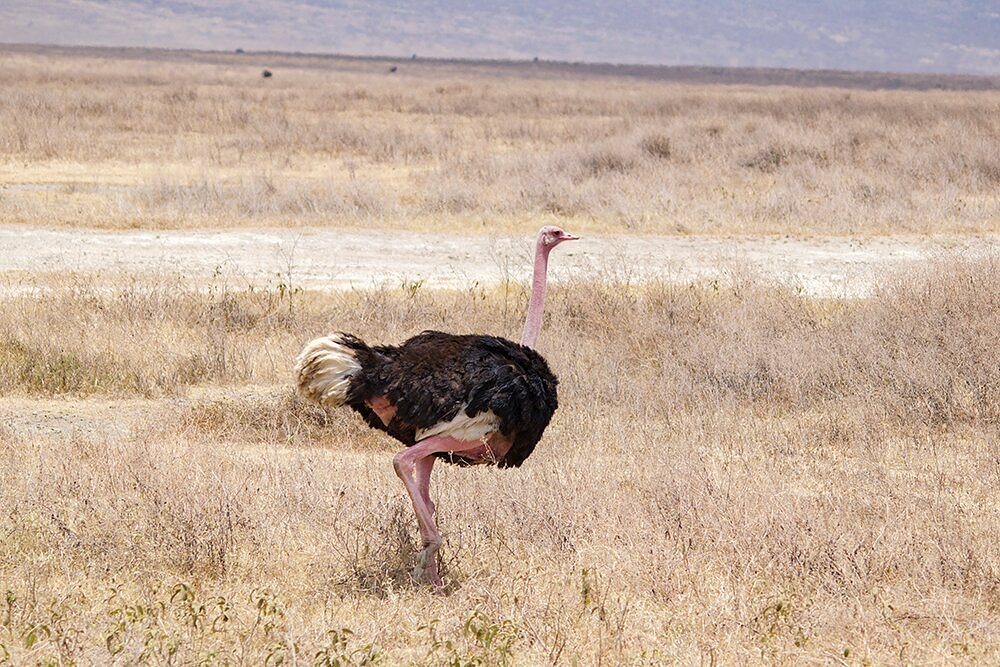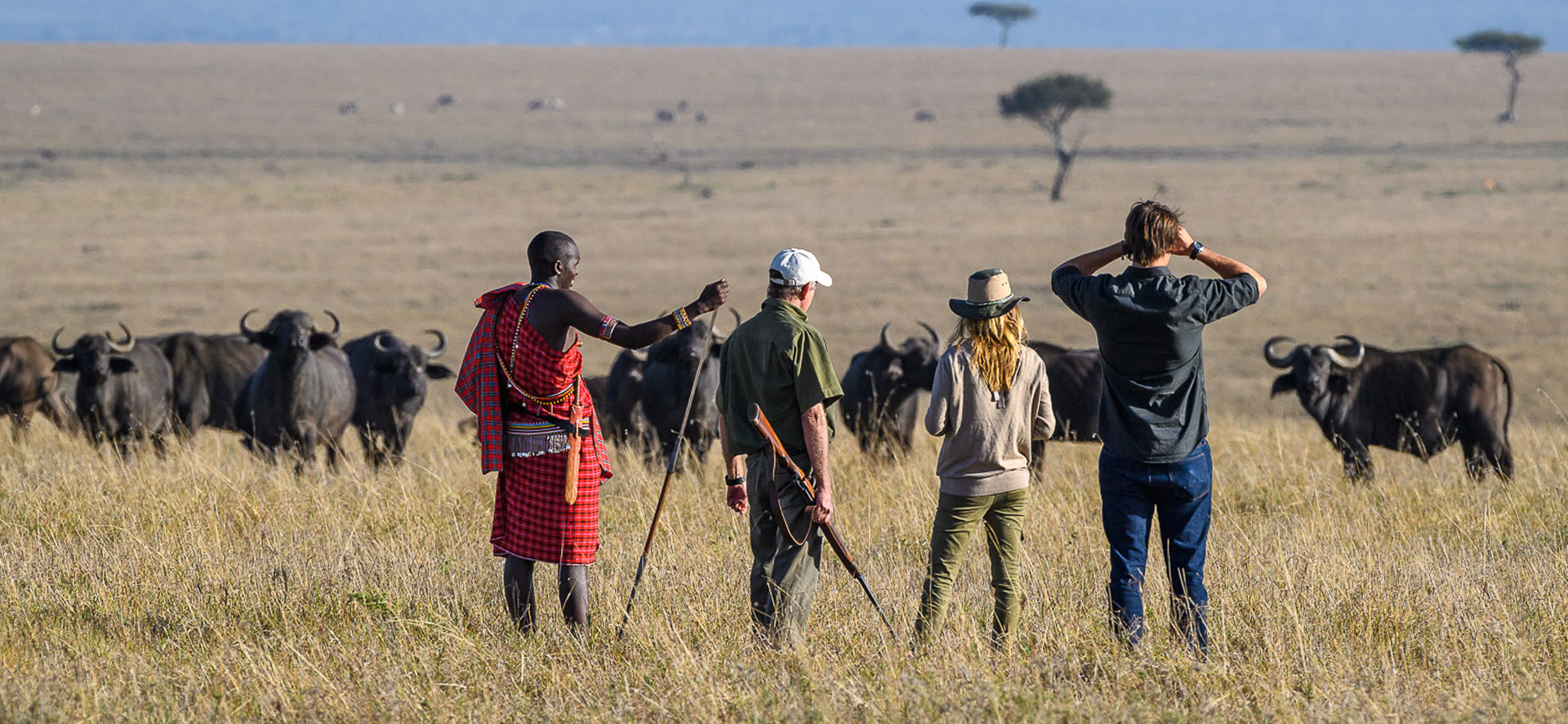Ngorongoro Conservation Area
The Ngorongoro Conservation Area (NCA) is one of Tanzania’s unmissable safari destinations. This natural gem stands as a testament to the unspoiled natural beauty and raw wilderness of this spectacular country. From it being referred to as the “Garden of Eden” to its sprawling savannah Plains and other ecosystems around the Ngorongoro Crater (the main attraction here). Ngorongoro Conservation Area, a UNESCO World Heritage Site, is a spectacular landscape of unparalleled biodiversity as well as Ecological significance. Over 700,000 visitors get to enjoy the beauty and diversity of this phenomenal creation each year to witness exceptional wildlife species, including the sought-after Big Five Game. In this ultimate guide to Ngorongoro, we take you through the journey of exploring this tranquil wilderness.
From encountering large herds of majestic elephants, Masai giraffes, Rhinos, and other large mammals that shape its landscape to the plethora of colorful feathered beauties that fill the skies, the Crater and surrounding areas teem with life at every turn. Whether you are a nature lover, wildlife and bird enthusiast, intrepid adventurer, or just yearning for comfort in Mother Nature’s embrace, the Ngorongoro Conservation Area provides an experience like no other.
A little about Ngorongoro Conservation Area
Stretching over 8300 square kilometers, the Garden of Eden comes to life in this majestic Protected Area in the west of Arusha and within the Northern safari circuit of Tanzania. Lying in the northwestern side of the country and close to the Serengeti National Park, this Protected Area is also fringed by the Great Rift Valley. Originally gazetted in 1959 as a multiple land-use area, this well-established conservancy area is managed by the “Ngorongoro Conservation Area Authority.”
What sets this safari destination apart is its unique geography and ecology. This Protected Area is home to the stunning Crater, marked by a basin extending about 18 km in diameter and sitting 1640 feet below the rim at an altitude of 7217 feet above sea level. This remarkable landscape was formed about 2.5 million years ago due to a massive volcanic eruption in Northern Tanzania.
Top things to see in Ngorongoro Conservation Area
Olduvai Gorge
This Paleoanthropological site is 48 kilometers long and 90 meters deep, with fossil remains of more than 60 hominins. This UNESCO World Heritage Site provides a record of human evolution, hence can be explored during Tanzanian safaris.
Ngorongoro Crater
Popular for being the World’s largest intact and unfilled Volcanic Caldera with vast expanses of savannah plains, woodlands, forests, and other ecosystems surrounding it, hence making it a drawing factor for lots of animals and bird species.
Wildlife you can expect in Ngorongoro Conservation Area
Ngorongoro Conservation Area, especially the Crater, is a true Paradise for wildlife enthusiasts. With its beautiful and diverse ecosystems, this tranquil area is home to over 115 mammal species that include 25,000 large mammals. From Rhinos, Hippos, African bush elephants, Cape buffaloes, to impalas, vervet monkeys, and leopards, the area offers chances to see some of the Continent’s most iconic wildlife species in their natural habitats.
Other wildlife species here include East African wild dogs, bush pigs, cheetahs, Masai giraffes, servals, bushbucks, kudus, Thomson’s and Grant’s gazelles, Hartebeests, Jackals, zebras, leopards, Common warthogs, Oribis, spotted hyenas, lions, jackals, wildebeest, Topis, Giant elands, Defassa waterbucks, to mention but a few.
Birdlife
 Nearly 500 species call the Ngorongoro Conservation Area home. Some of the most popular species include Tanzanian masked weaver bird, East African citril, African dusky flycatcher, Hildebrandt’s francolin, white-eyed slaty-flycatcher, Baglafetch weaver, Eastern double-collared sunbird, emerald-spotted wood-dove, European swallows, golden-winged sunbird, dusky turtle-dove, village weaver bird, yellow-billed oxpeckers, eastern crested guinea fowl, black-bellied bustard, Caspian lapwing, cape robin chat, grey-headed nigrita, Montagu’s harrier, European rollers, purple grenadier, fulvous whistling-duck, thick-billed seedeater, Grey crowned crane, and many others.
Nearly 500 species call the Ngorongoro Conservation Area home. Some of the most popular species include Tanzanian masked weaver bird, East African citril, African dusky flycatcher, Hildebrandt’s francolin, white-eyed slaty-flycatcher, Baglafetch weaver, Eastern double-collared sunbird, emerald-spotted wood-dove, European swallows, golden-winged sunbird, dusky turtle-dove, village weaver bird, yellow-billed oxpeckers, eastern crested guinea fowl, black-bellied bustard, Caspian lapwing, cape robin chat, grey-headed nigrita, Montagu’s harrier, European rollers, purple grenadier, fulvous whistling-duck, thick-billed seedeater, Grey crowned crane, and many others.
Other species to look out for during birding tours include the black crakes, Hottentot teal, fan-tailed widowbird, helmeted guinea fowl, Jackson’s widowbird, rufous-tailed weaver bird, pallid harrier, streaky seedeater, Northern wheatear, Kori bustards, ostriches, lesser kestrel, red-billed teal, red-billed oxpeckers, spur-winged goose, Speke’s weaver, Tacazze sunbird, wire-tailed swallow, yellow-billed stork, and yellow-throated long claw, among others.
Types of Safaris in Ngorongoro Conservation Area
Embark on a trip like no other by visiting Ngorongoro Conservation Area by seeking a traditional safari experience (game drives), birding, walking safaris, and hot air balloon tours.
Traditional safaris (Game drives)
Traditional safaris (or game drives) provide the once-in-a-lifetime opportunity to explore game tracks through the vast savannah grasslands and encounter lots of wildlife species in their natural habitat. These adventures normally involve driving in open-roof 4X4 Safari vehicles, hence making it possible for visitors to cover larger distances and areas, in addition to increasing chances of spotting wildlife. Here, you will see the Big Five Game (Leopards, Rhinos, Lions, buffaloes, and African bush elephants), spotted hyenas, wildebeests, impalas, hartebeests, Masai giraffes, and others.
Birding tours
Birding tours in Ngorongoro Conservation Area provide a phenomenal opportunity to witness the rich diversity of bird species that call the Crater and surrounding ecosystems home. With over 500 bird species to spot, avifauna enthusiasts are sure to enjoy unforgettable experiences.
Among the unmissable species in Ngorongoro Conservation Area are East African citril, African dusky flycatcher, Hildebrandt’s francolin, white-eyed slaty-flycatcher, rufous-tailed weaver bird, pallid harrier, streaky seedeater, Northern wheatear, Kori bustards, ostriches, Baglafetch weaver, Eastern double-collared sunbird, emerald-spotted wood-dove, European swallows, and the golden-winged sunbirds, which can be spotted in certain areas of the Protected Area.
Hot air balloon tours
Scenic hot air balloon tours over Ngorongoro Conservation Area offer a jaw-dropping aerial perspective of this outstanding ecosystem. From above, visitors can appreciate the natural beauty and vastness of the Crater and surrounding ecosystems, as well as spot animals from a whole new angle. These aerial tours are perfect for visitors looking to capture breathtaking aerial photographs or provide a proper view of the Crater.
Walking safaris
Walking safaris are an incredible way to get in touch with the Ngorongoro Conservation Area’s unspoiled surroundings and understand the terrains that different wildlife species and birds live in. Though this appears like a terrifying adventure, the armed Ranger guide will ensure your safety from predators and other dangers.
 When to visit Ngorongoro Conservation Area
When to visit Ngorongoro Conservation Area
The Ngorongoro Conservation Area can be visited any time of the year, and there are perks to exploring the Protected Area in all seasons. For this reason, picking the best time for you will depend on what you most wish to experience.
Most visitors prefer the dry Season (June to September) over the rainy season (March to May, then November). The dry season has warmer temperatures, and it is a lot easier to enjoy sights of animals that remain around a few water sources.
It is undeniable that it is likely to rain most of the day during the wet/rainy season, but these showers are intermittent. Frequent rains bring about vegetation blooms, hence making the season perfect for nature photography and birding. However, animals are difficult to sight, and certain areas of the protected Area are inaccessible.
Best Places to Stay in/around Ngorongoro Conservation Area
After a phenomenal and rewarding experience of exploring Ngorongoro Conservation Area, the best thing is to retreat to the comfort of Safari Lodges/Camps within/around the Protected Area’s embrace. Some of the options include Acacia Farm Lodge, andBeyond Ngorongoro Crater Lodge, Kirurumu Ngorongoro Camp, Elewana the Manor at Ngorongoro, Osonjoi Lodge, the Ngorongoro Sopa Lodge, Ngorongoro Serena Safari Lodge, Neptune Ngorongoro Luxury Lodge, Olduvai Camp, Misigiyo Tented Camp, Gibbs Farm, Ngorongoro Crater Lodge, Sanctuary Ngorongoro Crater Camp, the Highlands, Lemala Ngorongoro, Lemala Ngorongoro Tented Camp, Ngorongoro Forest Tented Lodge, and many others.
How to get to Ngorongoro Conservation Area
With a high probability of landing at Kilimanjaro International Airport, you can drive about 250 kilometers/approximately 4-5 hours to Ngorongoro Conservation Area (depending on where you choose to stay or access gate).
However, if you prefer not to drive to Ngorongoro Conservation Area, you can fly to Lake Ndutu Airstrip (on the Southern side of Lake Ndutu), or Manyara Airstrip, then drive to your Safari Lodge/or Camp.
